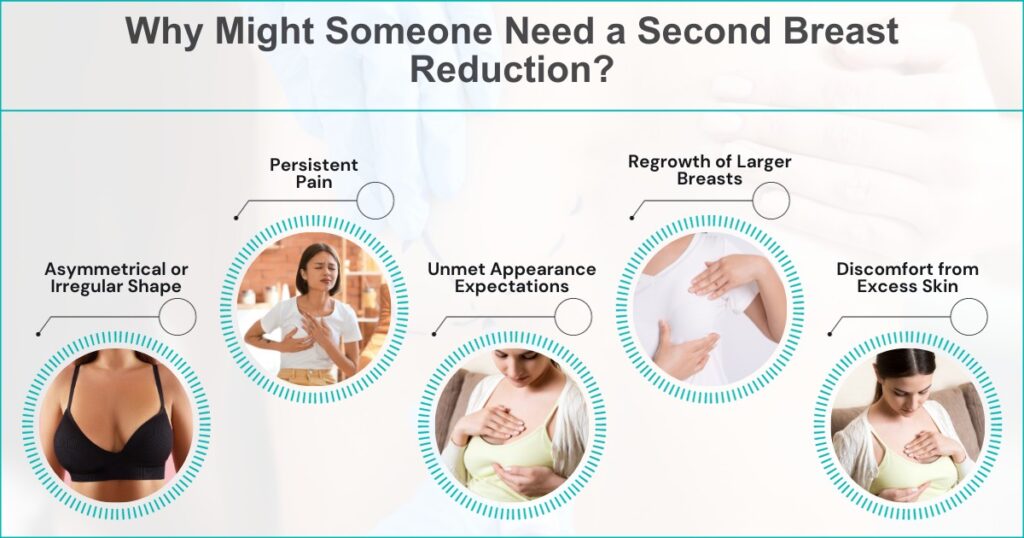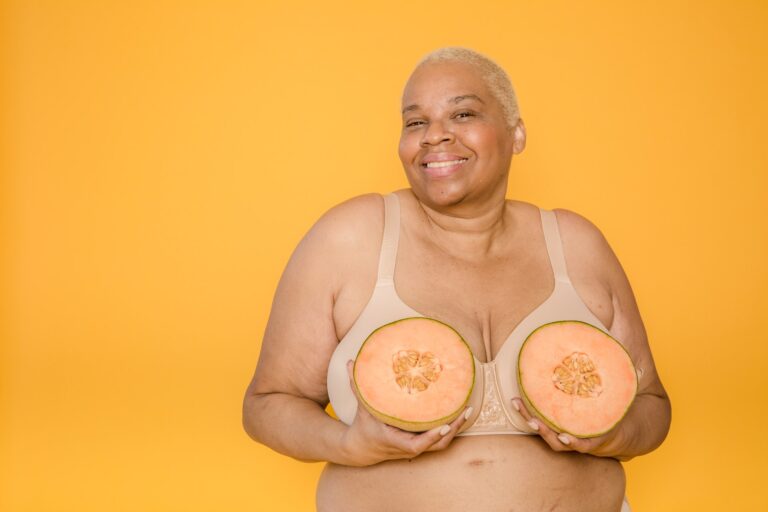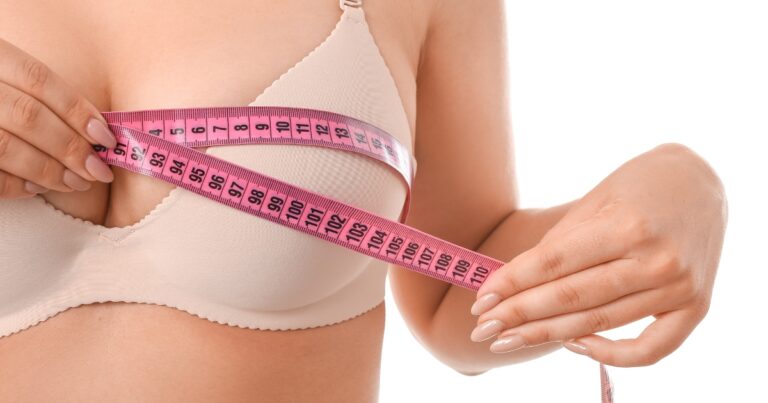Breast reduction, also known as reduction mammoplasty, is a popular procedure that removes excess fat, glandular tissue, and skin from the breasts to achieve a breast size proportionate to your body. It helps reduce discomfort caused by overly large breasts.
While breast reduction can provide life-changing results for many women, a common concern is – can breast reduction grow back? In this detailed guide, we will analyze why breasts may re-enlarge after surgery and what you can do to stop a recurrence.
What Is Breast Reduction Surgery?
Breast reduction surgery aims to reshape disproportionately large breasts that are causing backaches, shoulder grooves from bra straps, sleeping issues, poor posture, and low self-esteem. It involves the removal of excess skin, fat, and glandular tissue to reduce the size and weight of heavy breasts.
During the procedure, your plastic surgeon will anchor the remaining breast tissue using stitches and sutures for support and shaping. They will also reposition the nipple and areola into its new place.
Book A Consultation With Dr Tarek Bayazid
Top-rated Plastic Surgeon For Breast Reduction in Dubai
Installment Plan Available
Why Do Breasts Grow Back After A Reduction?

There are a few reasons why your breast size may increase again after initially shrinking from reduction surgery:
- Pregnancy
Pregnancy can spur significant breast growth due to hormonal changes in the body. Your breasts start preparing milk ducts and glands to nurse the upcoming baby.
It’s common for breast reductions to “grow back” or enlarge during pregnancy as the residual breast tissue expands. However, they may return to their post-surgical size after you stop breastfeeding.
- Weight Gain
Your breast consists of fatty tissue besides milk glands and ducts. Any major weight gain after surgery can reignite breast growth. The residual fat cells may enlarge with substantial weight gain.
Losing weight can help shrink your post-reduction breasts. Maintaining healthy body weight is key to preventing excess breast volume recurrence.
- Menopause
Some women experience renewed breast growth as they enter menopause. The drop in estrogen levels often increases breast tissue density in middle-aged women.
If you had reduction surgery before hitting menopause, the changes in hormones and breast tissue may spur growth years later.
- Age Factor
Breast reduction results are very long-lasting in younger women. But as you age and go through hormonal changes, recurrence chances increase. The breasts may partially re-enlarge thanks to pregnancy, menopause, or natural aging.
- Doctor’s Skill
The technique your plastic surgeon uses impacts reduction longevity. An expert who removes adequate tissue without impacting blood supply will yield permanent, lasting diminishment in breast size.
However, an inexperienced surgeon may leave behind excess fat and glandular tissue or damage blood circulation. This raises the likelihood of breast regrowth within a few years post-surgery.
Do Breast Reductions Permanently Stay Smaller?
For most women under 30 years who maintain a steady weight, the reduction in breast volume after surgery is permanent. But, in older women undergoing hormonal fluctuations, moderate regrowth is possible over time.
Here are the key factors affecting the long-lasting success of reduction mammoplasty:
- Age at surgery: Younger women see longer-lasting results from breast reduction than older females. Breasts are firmer, and tissue regrowth chances are slimmer in your 20s.
- Weight changes : Major weight fluctuations can change breast appearance. Significant fat gain reignites breast growth, but losing weight helps sustain surgical results.
- Pregnancy : During and after pregnancy, breasts expand due to hormonal changes. But tissue shrinks back once nursing halts. The reduction may seem less effective if you get pregnant shortly after surgery.
- Menopause : Breast tissue increasingly densifies due to hormonal changes for middle-aged women in menopause. This explains why many face breast regrowth a decade after successful reduction.
- Surgeon’s skill : An expert who delicately reshapes breasts and adeptly excises excess tissue yields permanent diminishment in size and lift. An inept surgeon raises recurrence risk.
Though some regrowth is expected with aging, most women enjoy permanently reduced, uplifted breasts after a breast reduction surgery. A skilled surgeon and stable weight are key.
Do Breast Reductions Grow Back After Reduction Surgery?
Yes, breast tissue can gradually re-expand years after a successful reduction surgery. However, experts say the extent of regrowth is limited thanks to the permanent tissue removal and suspension techniques used in the procedure.
Here’s how much breast regrowth you may see over time:
1-5 Years After Surgery
In the initial years following reduction, it’s unlikely for the breasts to re-expand significantly in volume. As long as you maintain a steady weight and don’t get pregnant soon, you’ll enjoy shapely, smaller breasts just like they appeared a few months post-op.
Any regrowth seen during pregnancy and nursing recedes once you stop breastfeeding.
5-10 Years Later,
5 to 10 years post-surgery, you may notice slight further drops in breast perkiness as skin ages. Modest tissue regrowth is also possible due to aging or menopause in some women. But for most females, the uplift and reduction effects still remain intact years later.
10-20 Years Later
A decade or longer after surgery, a modest reenlargement is observable in many middle-aged women nearing or going through menopause. The residual tissue may expand somewhat thanks to hormonal changes.
Additionally, skin and tissue elasticity reduces with aging. So the breasts often appear less perky and start drooping more over 10+ years even if size remains smaller than original.
Despite these long-term changes, the breasts don’t fully revert to presurgery proportions of excess volume and sag. Most women still find their decade-old reduction outcome satisfactory.
Surgical Techniques that Lead to Breast Regrowth
Certain outdated surgical techniques raise the likelihood of disappointing long-term results from reduction surgery:
- Liposuction alone : Removing fat without excising and reshaping glandular tissue cannot yield lasting shrinking and lift. Fatty tissue reaccumulates, and the breasts sag again within years.
- Overly aggressive tissue removal : Being too aggressive can hamper blood circulation, causing complications, shape irregularities, or faster recurrence.
- Poor pedicle placement: The pedicle carries nerves and vessels nourishing the nipple-areola complex. If pedicles shift over time, blood flow lessens, causing tissue necrosis and regrowth around the dead regions.
- Forgoing anchoring stitches : Internal stitches prevent shifting breast tissue and lift it up for perkier results longer. Missing this step means premature drooping recurrence.
Modern breast reductions involve meticulous tissue removal, pedicle preservation, and permanent anchoring stitches; this helps prevent chances of growth years later.
Factors that Aid Breast Reduction Longevity
You can optimize and prolong your breast reduction results by
- Achieving your target weight prior to surgery so breasts appear balanced on your frame. Drastic weight loss after reduction can leave them looking deflated.
- Quitting smoking and nicotine months before surgery as it impairs healing. Smoking after surgery hurts results longevity.
- Discuss goals, technique details, and potential changes over decades during your initial consultation.
- Following all your surgeon’s post-op care instructions on rest, compression garments, activity restrictions, etc.
- Maintaining steady, near-surgery weight long after the procedure through regular activity and healthy nutrition.
- Doing periodic self-exams and scheduling annual clinical breast exams for early detection of abnormalities over time. Seek prompt help for unusual symptoms.
While experiencing some breast regrowth over time is normal, certain steps help you delay or minimize recurrence.
Who Are the Best Candidates to Undergo Breast Reduction?

If you meet the following criteria, a breast reduction may profoundly enhance comfort, ease pain and boost confidence for you long-lastingly:
- Women with overly large, heavy breasts causing neck, shoulder, back or posture issues
- Healthy women struggling with low self-esteem, lack of self-confidence and social isolation due to disproportionate bust size
- Females facing skin irritation, breast pain or discomfort from heavy bra bands
- Individuals experiencing restricted participation in sports, difficulty finding clothing and reduced physical activity
- Ideal patients have achieved or are very close to their target weight and have reasonable expectations of scarring
Consult with an experienced plastic surgeon to determine if this surgery suits your unique needs. Be open about what you hope reduction surgery can and cannot change about your physical appearance and comfort.
Can I Breastfeed After Reduction?
Many women successfully breastfeed after reduction thanks to advancements allowing pedicle and nipple repositioning without hampering function.
With modern techniques, surgeons can preserve milk duct pathways critical for nursing even while removing excess breast tissue. This helps retain or restore the ability to breastfeed post-surgery for most moms.
However, due to variability in techniques and patient anatomy, lactation challenges may occasionally occur:
- Nipple numbness hampering baby’s ability to latch on
- Milk production issues from severed ducts
- Needed supplements due to low milk volume
Discuss your plans for pregnancy and breastfeeding honestly with your surgeon when planning reduction surgery for optimal results.
Recovery Phases After Breast Reduction
The breast reduction recovery timeline follows four main phases spanning six months: early healing focused on pain and swelling management; transitioning slowly into regular activity and bras; settling into final contour as residual swelling resolves; and resumption of full activity revealing matured results. Long-term follow-up is advised to monitor age-related breast changes.
| Phase | Time Frame | Description |
| Immediate Post-Op | 0-2 Days | Directly after surgery; involves hospital stay, monitoring for complications. |
| Early Recovery | 3 Days – 2 Weeks | Return home, manage pain and swelling, limited activity. |
| Intermediate Recovery | 2-6 Weeks | Gradual return to normal activities, continued healing. |
| Follow-up Visits | 6 Weeks – 3 Months | Regular check-ups with the surgeon to monitor progress. |
| Activity Resumption | 3-6 Months | Gradual resumption of exercise and strenuous activities. |
| Long-Term Healing | 6 Months – 1 Year | Final results visible, scars begin to fade, full healing achieved. |
This table outlines the breast reduction recovery week by week , detailing each phase from immediate post-operative care to long-term healing, including activity resumption and follow-up visits. It provides a structured overview of the healing process and expected milestones for patients.
What Symptoms Indicate Breast Regrowth After Reduction?
Be on the lookout for the below subtle symptoms that may indicate breast regrowth years after reduction surgery:
- Bras feeling tighter around chest and cups overflowing
- Heavier breasts causing recurrent neck, back and shoulder pain
- Reappearing shoulder grooves from bra straps sinking into skin
- Rashes or irritation under breasts or near folds
- Poor posture and restricted breathing due to substantial breast weight
- Loss of perkiness, volume changes or shape shifts
Catching subtle breast changes early allows for timely specialist consultation and solutions. Don’t ignore symptoms assuming regrowth is normal with aging after reduction.
Can I Have Revision Surgery If Breasts Regrow?
In rare cases of substantial breast regrowth that retriggers physical discomfort, rashes or poor body image, revision reduction surgery is possible.
During a revision:
- Remaining excess glandular tissue and fat gets removed again
- Sagging skin tightened via lifts or modified techniques
- Pedicles may need minor repositioning if circulation was hampered
- Complementary procedures like implants or lifts done for shape/size changes
However, the revision may carry higher complication risks compared to primary reduction surgery. Before proceeding, discuss the pros, cons, and alternatives to additional surgery with your original surgeon.
Key Takeaways:
A breast reduction can profoundly transform your figure, ease discomfort, and boost self-confidence with smaller and uplifted busts. For most women, these improvements last lifelong if their weight remains stable after surgery. However, modest breast regrowth is possible years or decades later due to pregnancy, aging, or menopause-led tissue changes.
This raises a common question: Does breast reduction grow back? While complete regrowth is unlikely, some increase in size can occur in certain circumstances, like hormonal changes or weight gain. However, the extent of recurrence is limited thanks to expert techniques that permanently cut out excess tissue while sparing nerves, ducts, and blood flow.
To enjoy lasting results from reduction surgery
- Have realistic expectations of changes over time
- Maintain steady weight long-term
- Follow post-op guidelines dutifully
- Schedule periodic breast health checks.
Breast growth after reduction is a possibility, albeit limited, that can help set realistic expectations for long-term outcomes. Breastfeeding Post-Reduction Consequences means that after a woman has surgery to make her breasts smaller, she might have trouble feeding her baby with her breast milk.
Book a Consultation for Breast Reduction
If overly large, heavy breasts are interfering with daily comfort and activity, a personalized breast reduction plan by an expert may help transform your life.
Book a consultation with top Dubai plastic surgeon Dr.Tarek Bayazid today to determine if breast reduction is suited for your unique needs and goals.
During an informative appointment, Dr. Tarek will:
- Evaluate your health, anatomy, aesthetic objectives, and lifestyle
- Check for skin elasticity, excess fat, and tissue contributing to heavy bust
- Educate you on the procedure, limitations, advanced techniques used, and realistic outcomes
- Personalize smart surgical recommendations aligned with your expectations
- Provide patient photos to help envision achievable reduction results
With a decade of experience providing exceptional outcomes for hundreds of females seeking smaller, uplifted breasts, Dr. Tarek confidently customizes every case for natural yet dramatic improvements.







